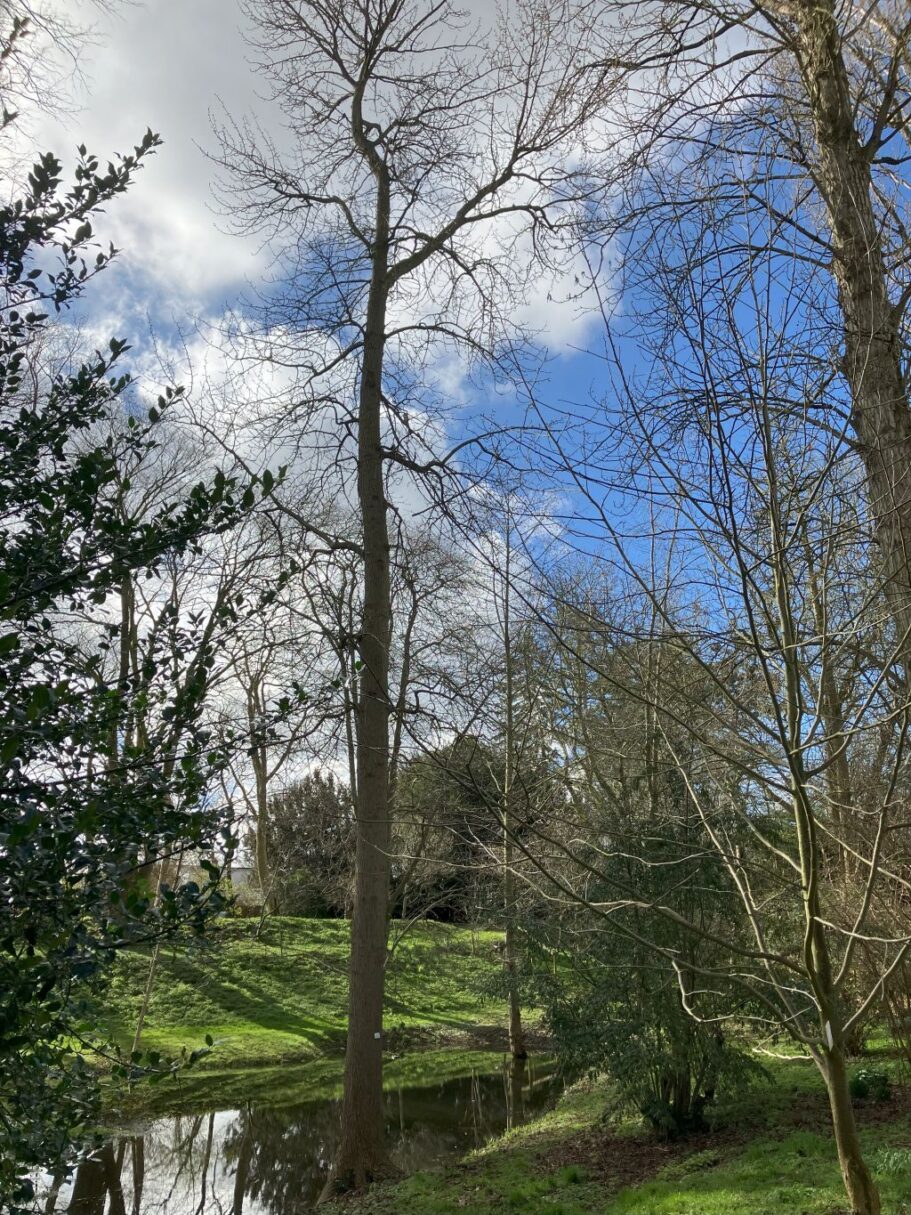#154 BLACK COTTONWOOD
Populus trichocarpa

Planted: 1922
This tree is on the northwest bank of the moat.
| Distribution: | Native to western North America. Other common names: Western balsam-poplar or California poplar. |
| Planting Date: | 1922, James Smith, (Scotland Nurseries), Tansley, Matlock, Derbyshire. Root sucker of specimen originally planted on Loggia site – where the summerhouse stands today. |
| Growth Habit: | A large tree with a roughly conical and quite dense. In large trees, the lower branches droop downwards. Normally dioecious; male and female catkins are borne on separate trees. |
| Bark: | Grey and covered with lenticels; thick and deeply fissured on old trees. Can become hard enough to cause sparks when cut with a chainsaw. |
| Leaf: | 7 to 20 cm long with a glossy, dark green upper side and glaucous, light grey-green underside. Larger leaves may be up to 30 cm long and may be produced on stump sprouts and very vigorous young trees. The leaves are alternate, elliptical with a crenate margin and an acute tip, and reticulate venation. The petiole is reddish. |
| Flowers: | The buds are conical, long, narrow, and sticky, with a strong balsam scent in spring when they open. Flowers appear in early spring. Catkins contain 30 to 60 stamens, elongated to 2 to 3 cm, |
| Fruit: | At maturity, the catkins are 8 to 20 cm long with rotund-ovate, tricarpellate subsessile fruits 5 to 8 mm long. Each capsule contains many minute seeds with long, white, cottony hairs. The seed is disseminated by wind and water. Under natural conditions the seed is short lived, 2 – 4 weeks. |
| Toxicity: | Not known |
| Potential tree size | 30 to 50 metres and a girth of over 6 m |
| Uses: | Grown as an ornamental, valued for its fast growth and scented foliage in spring; also used for windbreaks. Roots are invasive, and can damage the foundations of buildings. Extracts from the fragrant buds for use as a perfume in cosmetics. The wood is light and strong for its weight. The fine cellulose fibres are used for high-quality book and magazine paper. The tree is still significant for many Native American tribes. Some consume the inner bark and sap and feed their horses the inner bark and foliage. The wood, roots and bark have been used for firewood, canoe making, rope, fish traps, baskets and structures. The Squaxin used the bark for sore throats and for the treatment of tuberculosis, as well as water and the bruised leaves as an antiseptic mixture. The Klallam used the buds for an eye treatment. The Quinault extracted gum from the burls and applied it to cuts on the skin. |
| Plant Hunter: | Not known |
| Introduction Date: | First described as a species in 1852, from a specimen collected in Ventura, California, but not introduced to Europe until the end of the 19th century, probably from British Columbia. |
| Vegetative reproduction: | Can regenerate from rooting of partially buried fragments of branches or roots. Also has the ability to abscise; shoots, with green leaves, drop to the ground and may root where they fall or be dispersed by water transport. |
| Comments: | The popular name Cottonwood refers to the long hairs on the seeds giving ripe fruit the appearance of cotton bolls. The species name trichocarpa three carpelled fruit. |